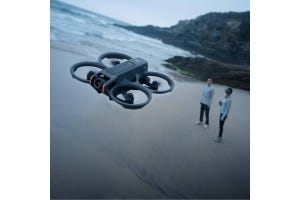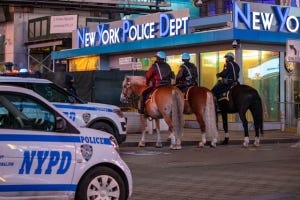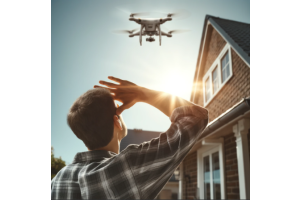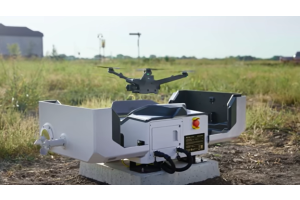Drones are great. No argument there. The visuals, the flexibility, tech that is beneficial for everyone from hobbyists to commercial users and public safety agencies – they are increasingly becoming a part of our airspace. However, not everyone sticks to the rules, and that comes with consequences. Let’s look at two incidents:
M&T Bank Stadium Drone Scare
On one late January evening, an AFC championship game at M&T Bank Stadium was about to hit the headlines – and not because of the scoreboard. The showdown between the Baltimore Ravens and the Kansas City Chiefs was abruptly interrupted by a drone flying overhead – piloted by Matthew Hebert, a visitor from Chadds Ford, Pennsylvania. It showed just how a single security lapse and unregulated use of drones over-populated public spaces can be risky.
Hebert's drone, one of four unregistered drones identified during the game, flew dangerously close to the audience, creating not just a nuisance but a potential hazard to the 71,430 fans in attendance. The incident even led to a temporary suspension of the game. Did you know that the Federal Aviation Administration (FAA) has rules governing the airspace over sporting events? According to its guidelines, any venue with a capacity exceeding 30,000 spectators is subject to a temporary flight restriction (TFR). So no, you can’t just launch your drone in the stadium to ‘grab that perfect video’. The stadium incident was an egregious violation of this policy.
Definitely, after the event, Hebert got his date before the judge. He received a year of probation and a $500 fine after admitting to the misdemeanor. This served as a lesson for him personally and as a warning to other drone operators about how seriously airspace violations are taken. But it also brings to focus the inadequacies in public awareness regarding safe and legal drone use, especially in proximity to large public gatherings.
According to court documents, Hebert was depending on his drone's remote control app to inform him about restricted flying zones. The drone wasn't registered as well, and he lacked the necessary remote pilot certification from the FAA to legally pilot the unmanned aircraft.
This event is not isolated. Stadiums across the country have encountered similar violations, with Baltimore's M&T Bank Stadium experiencing 12 drone infractions in a single season despite FAA regulations and installed detection systems. This shows the critical gaps in knowledge and compliance among drone enthusiasts.
Intrusion at Langley Air Force Base
A different but related challenge was seen at Langley Air Force Base in southeastern Virginia. Despite being one of the vital hubs of America’s air defense network, there was alarming security breach from drones. So serious were these incidents that the United States government ended up sending advanced assets including NASA's WB-57F high-altitude research aircraft, to monitor and assess the situation.
The drones, varying in size and configuration, first made their appearance on the evening of December 6, 2023. What followed was a series of unauthorized intrusions that continued throughout the month.
Langley Air Force Base, part of Joint Base Langley-Eustis, plays a crucial role in the nation’s defense, especially in supporting missions of NORAD and NORTHCOM aimed at protecting the U.S. homeland – including the nation’s capital. The base, along with its surroundings, is a strategic military zone, housing F-22 Raptor stealth fighters and being in close proximity to significant naval and commercial shipyard facilities. This makes any breach of its airspace, like the drone incursions experienced, a matter of grave concern – even though there were no immediate signs of hostile intent.
This scenario is further complicated by the fact that the United States, particularly through its Air Force, is responsible for defending American airspace. You don’t want it getting swarmed by drones from random hobbyists or commercial users.
U.S. Air Force Gen. Gregory Guillot, head of U.S. Northern Command and NORAD, has emphasized the need for a comprehensive reassessment of our defense capabilities against such incursions. In his testimony before the Senate Armed Services Committee, Gen. Guillot highlighted the dominance of the counter-UAS mission in his initial assessment, acknowledging the substantial challenges posed by these drone flights at Joint Base Langley-Eustis.
The response to the drone activity around Langley, which included a noticeable increase in military air patrols and the deployment of specialized research aircraft, shows the concerted effort by various federal, state, and local agencies to tackle this emerging security challenge. Online flight tracking has even shown NASA's WB-57F conducting surveillance operations over the area, designated for "Imagery Support".
Also Read: Drone Disasters: 5 Times Pilots Screwed Up, And What It Cost Them
The Dual Challenge of Drones: Public Safety and National Security
The incidents at M&T Bank Stadium and Langley Air Force Base, while distinct in nature and scale, converge on a critical point: drones are becoming a significant concern for both civilian safety and the security of national interests.
On one hand, recreational drones, through either ignorance or willful negligence, pose risks to public gatherings and critical infrastructure. On the other, the potential use of drones for surveillance or even direct attacks on military facilities is a direct threat to national defense.
The FAA's regulations on drone operations around large public events and the deployment of detection technologies at stadiums are steps in the right direction. However, these measures alone are insufficient in the face of increasing drone usage and technological advancement. Similarly, the military's response to the Langley incursions indicates a high level of concern and adaptability but also highlights the need for continued vigilance and enhanced counter-UAS capabilities.
Forward Path: Education, Enforcement, and Innovation
Dealing with such problems requires a multifaceted approach:
Education and Awareness
Drone operators must understand the capabilities of their devices as well as the legal and safety implications of their flights. Training programs, public awareness campaigns coupled with user-friendly tools for airspace awareness, can mitigate risks associated with commercial and recreational drone use.
Strengthened Enforcement
As technology gets better, our rules need to keep up. Enforcement mechanisms should be made stronger as well, including penalties for violations and support for detection and mitigation technologies, in order deter unauthorized drone operations. Collaboration between local, state, and federal agencies is key to making sure everyone's on the same page.
Technological Innovation and Defense
For military installations and other critical infrastructure, the development of counter-UAS strategies that can adapt to evolving drone capabilities is paramount. Investing in research and collaboration with private sector innovators can is a big part of this.
Drones breaching restricted airspace are a problem for the industry. Tackling this challenge needs effort from all corners— from individual drone operators to regulatory bodies, from local law enforcement to the highest echelons of the U.S. military. That will keep the skies safe and secure for everyone.
This published op-ed is by Maurice Mugo, a drone enthusiast. The opinions expressed in this it are solely those of the author and do not necessarily reflect the views or opinions of DSLRPros.





